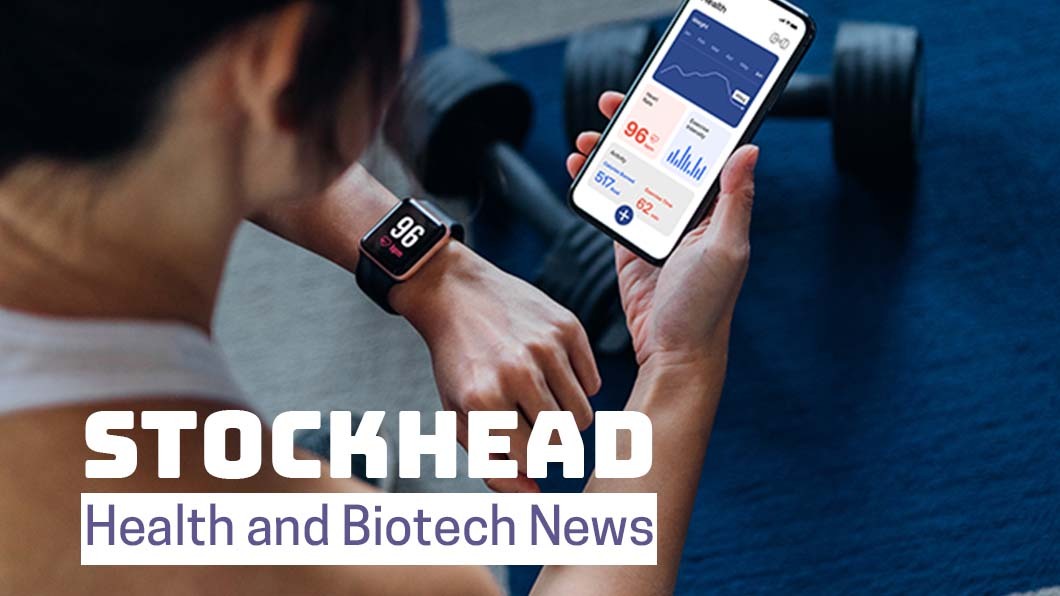Dr Boreham’s Crucible: Collingwood supporters rejoice, Orthocell can swiftly fix those missing teeth

Pic: Oscar Wong / Moment via Getty Images
Here’s one that investors can really get their teeth into: Orthocell’s (ASX:OCC) regenerative therapy Celgro quickens and improves dental implant procedures and repairs jangled nerves in more ways than one.
To the joy of Collingwood supporters*, the Perth-based regenerative medicine outfit last month announced that 10 patients in a marketing study were able to enjoy a normal diet after suffering damaged missing or diseased teeth.
While Celgro’s dental applications are certainly something to chew on, investors reserved their zeal for the interim, four-patient results of an open label study for peripheral nerve repair, announced in early May, which showed nerve regeneration.
Orthocell chief Paul Anderson says the ensuing 450 percent share price romp reflects investor recognition of both the nerve results and Celgro’s potential as a platform technology.
“The market was excited by the nerve piece but they are looking further and saying this is a company that should be valued higher,” he says. “All the results are more significantly advanced than anything in the market.”
Orthocell’s mission is to develop and commercialise cell therapies and related technology to treat soft tissue injuries and musculoskeletal disorders.
Orthocell was founded in 2006 by Anderson and chief scientific officer Prof Ming Hao Zheng, former CEO of cell therapist Verigen.
Having obtained earlier seed funding, Orthocell listed in August 2014 after raising $8m at 40c apiece.
About Celgro
Celgro is a naturally-derived collagen, originally from pigs, that forms a lattice to promote tissue growth and nerve regeneration.
It has applications in tendons, peripheral nerve, bone and joint cartilage repair, as well as broader general surgical and soft tissue reconstructive uses.
Celgro has also undergone pre-clinical evaluation as a collagen ‘rope’ for anterior cruciate ligament reconstructions.
“We took a risk to develop Celgro as a platform, it means we have taken slightly longer to get traction,” Anderson says. “But we see incredible value in the platform as a whole, whether in bone, ligament or nerve repair.”
Europe’s medical gatekeepers approved Celgro for dental bone and soft tissue (facial) applications in early 2018.
Nerve-tingling moment
Orthocell touched the desired nerve with investors when it revealed that the first four patients of the 20-strong trial regained muscle function and/or sensation of the affected limbs after 24 months’ treatment.
They also experienced an average 83 percent improvement in muscle power.
The subjects had severed peripheral nerves in the hands and upper limbs, the result of traffic, work or sporting mishaps.
The patients had suffered traumatic pain and had been unable to perform activities such as eating, bathing and toileting.
- Subscribe to our daily newsletter
- Join our small cap Facebook group
- Follow us on Facebook or Twitter
Celgro is secured around nerve ends, forming a sealed conduit to allow new fibres to reconnect. A key feature is that it is ‘tensionless’, which means there’s no use of sutures (stitches) that can further damage soft tissue.
“The nerve injuries suffered by the patients in this trial were so severe that they would not have been able to regain normal use of their injured arm and hand without microsurgery,” says orthopaedic nerve specialist Dr Alex O’Beirne of Perth’s St John of God Subiaco Hospital.
In early 2018, a 72-patient study of patients with dodgy anterior cruciate ligaments showed “superior biomechanical properties”.
Carried out with the University of Western Australia, the study showed the Celgro rope was equal to, or better than, the use of tissue typically harvested from hamstrings.
The company is now preparing Australian and US regulatory submissions.
Chewing over the dental potential
The Celgro dental trial showed the 10 patients – not all of whom were Collingwood supporters – generated enough new bone to stabilize their implants and complete treatment in just over four months after the single-stage treatment.
In comparison, traditional guided bone regeneration treatment involves two procedures over eight months: the first to install the implant into the jaw and the second to place the implant abutment to the prosthetic tooth.
With Celgro the implant and abutment can be placed at the same time.
The marketing study was carried out in partnership with Perth maxilla-facial surgeon Prof Dr Brent Allan and the University of Western Australia’s and Orthocell’s Prof Zheng.
Orthocell’s other products
Orthocell’s older products are Ortho-ATI and Ortho-ACI, which use the patients’ own tissue to stimulate the growth of collagen and connective tissues.
Both products are approved for use in Australia, New Zealand, Singapore and Hong Kong under good manufacturing practice protocols.
Ortho-ATI (as in autologous tenocyte implantation) is for chronic tendon degeneration resistant to other therapies, as evidenced in gluteal tendinopathy (a common form of hip pain) and tennis elbow.
The company recently met with the US Food and Drug Administration (FDA) with a view to lodging an investigational new drug application.
Anderson is heartened by the FDA’s revised stance on approving cell therapies, which requires safety and good manufacturing practice, while letting the market decide what therapy works and what doesn’t.
“The FDA realizes that applying phase I to III clinical trial requirements for cellular therapies means that you are never going to get anything to market,” he says.
In the meantime, Orthocell is undertaking a 30-patient randomized trial with DePuy Synthes Products (Johnson & Johnson’s orthopaedics arm) to treat rotor cuff tendinopathy with Ortho-ATI rather than with corticosteroid injections.
Orthocell has also initiated its own 50-patient trial comparing Ortho-ATI with traditional surgery.
Hush-hush on Ortho-ACI
Orthocell doesn’t mention Ortho-ACI these days – not because the treatment has been unsuccessful but because it’s a case of one product too many for investors to comprehend.
Orthocell-ACI (as in autologous chondrocyte implantation) repairs articulating joint cartilages, mainly in the knee and ankle and replaces painful tendon grafts.
The treatment has been used on more than 700 patients locally and in Singapore and Hong Kong.
“It’s a fantastic product but when you want to articulate a story to the market it’s incredibly hard for people to get their head around so many products,” Anderson says.
“We have made a strategic decision not to talk about Ortho-ACI, but let it bubble on below the surface.”
Finances and performance
Orthocell’s revenue has been modest to date – just over $300,000 in the March quarter – but sales have been more about validating the company’s technology and manufacturing processes.
Having raised $3m in a placement and share purchase plan in early 2018, Orthocell has gone to the well again by raising $10.6m in a placement, at 4c apiece.
“The raising gives us a pathway for the next 24 months to enable us to achieve the goals we have set out,” Anderson says.
If Orthocell is not acquired, the company expects to sell its products via distributorships, licencing or other arrangements.
“It’s just not viable for a company of our size to do it on our own,” Anderson says.
Orthocell shares legged it up to 92c in mid-2015 and flopped to a low of 11.5c on May 7 this year.
The stock then jumped to 64c after the May 8 nerve trial results.
Dr Boreham’s diagnosis:
Orthocell likens its potential to that of the home-grown, ASX-listed Polynovo (ASX:PNV) which is now valued at around $1 billion.
Polynovo’s approved wound-repair scaffold product Novosorb is also relevant for other procedures including hernias and breast augmentations.
“They are a great company – but they only have the one product,” Anderson says.
Orthocell has made great strides in devising more effective treatments for the defective cartilage and tissues that Our Maker bestowed on us.
The knee, in particular is a tenuous strip of tissue (the anterior cruciate ligament) that connects the thigh bone (femur) to the shin bone (tibia). If it were a product, the consumer watchdog would recall it.
Orthocell estimates a $US600m ($860m) global market for nerve regeneration, $US900m for tendons and soft tissues and more than $US1.1 billion for peripheral nerve repair, with 700,000 annual procedures likely to benefit from Celgro.
Despite Orthocell’s dramatic share price increment, its circa $80m market cap suggests there’s plenty left on the table for newcomers to the stock.
Nerve repair adds that extra zing that could take the company to the next level.
* For overseas readers, Collingwood is a working-class Australian Rules football club synonymous with supporters lacking the requisite number of incisors and with poor dental hygiene.
Disclosure: Dr Boreham is not a qualified medical practitioner and does not possess a doctorate of any sort. Happily, he still has a full set of teeth, which explains why he doesn’t barrack for Collingwood.
This column first appeared in Biotech Daily.
UNLOCK INSIGHTS
Discover the untold stories of emerging ASX stocks.
Daily news and expert analysis, it's free to subscribe.
By proceeding, you confirm you understand that we handle personal information in accordance with our Privacy Policy.








